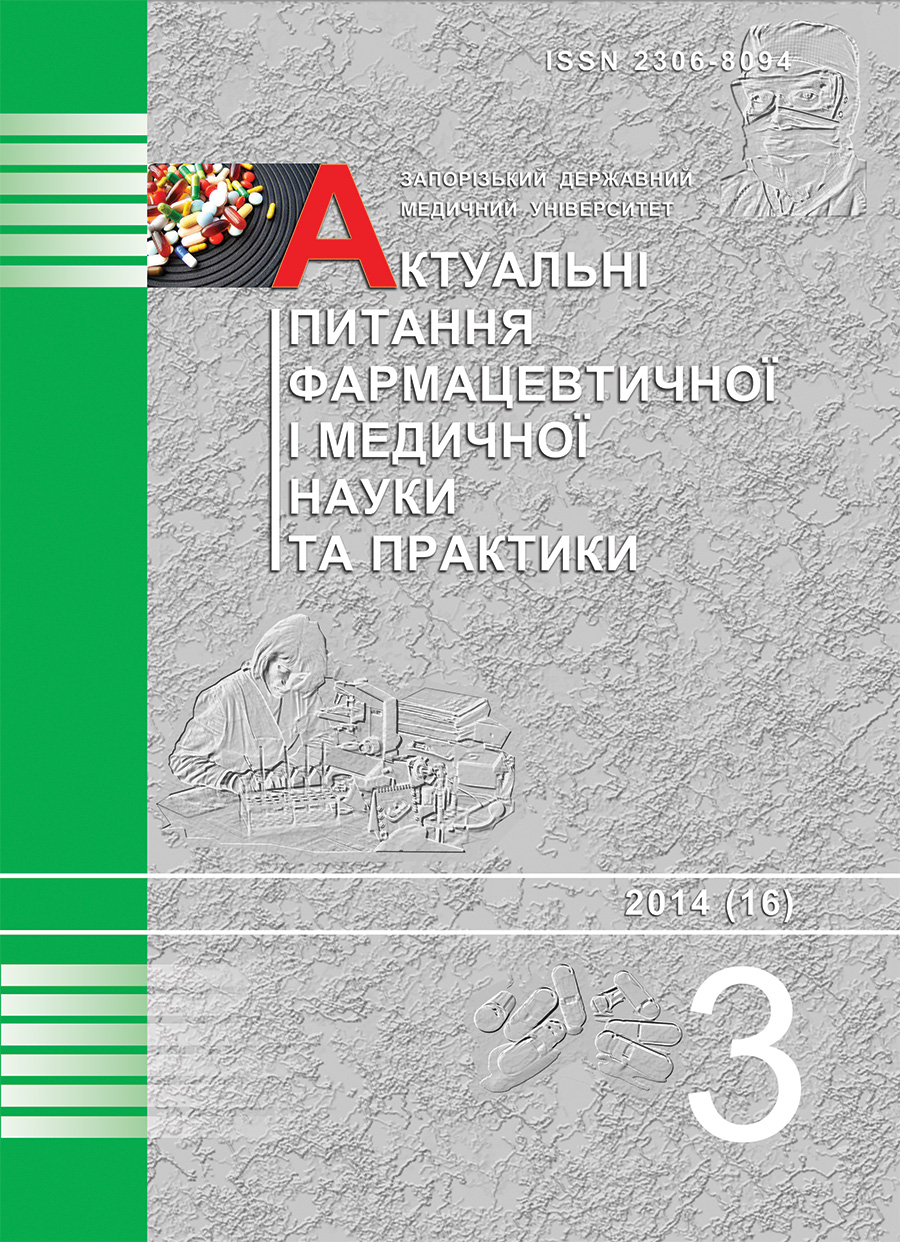ACUTE TOXICITYOF 4-AMINO-5-(2-, 3-, 4-NITROPHENYL)-1,2,4-TRIAZOLE-3-THIONES AND ITS DERIVATIVES
DOI:
https://doi.org/10.14739/2409-2932.2014.3.33865Keywords:
1, 2, 4-triazole, acute toxicityAbstract
The aim of research.
In recent years both domestic and foreign scientists pay great attention to the modeling of biologically active substances that can become the basis of new original drugs in future. Purposeful synthesis of compounds with low toxicity and distinct biological properties is the main step in the creation of drugs. Nitrogen-containing heterocycles as highly pharmacologically active compounds cause particular interest in this regard. Thus, considerable attention is devoted to the toxicity and biological activity of 1,2,4-triazoles as its nucleus is a structural fragment of drugs with different pharmacological effects (antifungal, antidepressant, hepatoprotective, wound healing, antiviral, etc.). It should be noted that 1,2,4-triazole-3-thione and 4-amino-1,2,4-triazole are non-toxic or low toxic substances. The aim of our work was to generalize relative dependence of pharmacological activity of synthesized compounds on their structure.
Materials and methods.
The research has been conducted by the V.B.Prozorovskiymethod on white Wistar rats. To determine the LD50 of 4-amino-5-(2-, 3-, 4-nitrophenyl)-1,2,4-triazole-3-thiones we used 5 groups of animals with 2 observations in each. Water-soluble compounds were dissolved in distilled water and administered intraperitoneallyin compliance with the rules of asepsis and antisepsis. Water-insoluble compounds have been stabilized by Tween-80 and administered through a metal tube into the stomach. Observations have been made after 24 hours.
Results.
Experiments have shown that the LD50 for new 4-amino-5-(2-, 3-, 4-nitrophenyl)-1,2,4-triazole-3-thiones and its derivatives are within the 400-1300 mg/kg and in accordance with the Sidorov I.K.classification studied compounds belong to low-toxic or non-toxic substances.
Acute toxicity of 4-amino-5-(2-, 3-, 4-nitrophenyl)-1,2,4-triazole-3-thiones and their derivatives is largely influenced by both presence and nature of substituents on the 1,2,4-triazole nucleus and nature of substituents at the C3 atom of 1,2,4-triazole cycle.
During our research the acute toxicity of 48 new compounds, namely 4-amino-5-(2-, 3-, 4-nitrophenyl)-1,2,4-triazole-3-thiones and their derivatives have been investigated. The next regularities between the structure and toxicity have been found:
- The condensation of 4-amino-5-(2-, 3-, 4-nitrophenyl)-1,2,4-triazole-3-thiones with aromatic aldehydes leads to less toxic compounds, while the reaction of diazotization and subsequent azo coupling reactions lead to the increase of toxicity of the synthesized compounds.
- The alkylation of thioneswith halide alkanes is accompanied by a significant decrease in toxicity of the compounds. However, in a series of 3-alkilito-5-(2-, 3-, 4-nitrophenyl)-4-amino-1,2,4-triazoles with increasing of carbon atoms number in alkyl radical the indicator of acute toxicity also increases. The same pattern is observed forthis compounds after oxidation, namely for thecorresponding 3-alkylthio-4-amino-5-(2-, 3-, 4-nitrophenyl)-1,2,4-triazoles.
- The alkylation of 4-amino-5-(2-, 3-, 4-nitrophenyl)-1,2,4-triazole-3-thiones with monochloroaceticacid leads to the increase of toxicity, and the transition from acids to their corresponding salts, on the contrary reduces the toxicity of the compounds.
Conclusion.
The relative dependence of pharmacological activity of synthesized compounds on their structure is an important issue.A wide range of biological activity and low toxicity determine the feasibility and need for further research. A study of synthetic and pharmacological properties of this group of compounds is an efficient aim in pharmaceutical industry.
References
Kaplaushenko, A. G. (2006) Syntez, fizyko-khimichni ta biologichni vlastyvosti S-pokhidnykh 5-(2-, 3-, 4-nitrofenil)-1,2,4-triazol-3-tioniv. (Dis…kand. farm. nauk). [Synthesis, physico-chemical and biological properties of derivatives of 5-S-(2, 3, 4-nitrophenyl) -1,2,4-triazoles-3-thiones]. Kyiv. [inUkrainian].
Panasenko, O.I. (2005) Syntez, peretvorennia, fizyko-khimichni ta biolohichni vlastyvosti pokhidnikh 1,2,4-triazolu. (Dis… dokt. farm. nauk). [Synthesis, transformation, physical, chemical and biological properties of 1,2,4-triazoles. Dr. farm. sci. diss.]. Kyiv. [in Ukrainian].
Sharma J., Ahmadb, M. Sh., Alam, Sh. (2012) Bioactive Triazoles: A potential review. Journal of Chemical and Pharmaceutical Research., 4(12), 5157–5164.
Kaplaushenko, A. G. (2007) Budova ta gostra toksychnіst amіno- і tіo-pokhіdnykh 1,2,4-trіazolu [Structure and acute toxicity of amino and thio derivatives of 1,2,4-triazoles]. Zaporozhskij farmacevticheskij zhurnal, 1 (40), 104–107. [in Ukrainian].
Prozorovskij, V. B. (1960) O vybore metoda postroeniia krivoi letal`nosti i opredelenie srednei letal`noi dozy [On the choice of the method of constructing the curve of mortality and determination of the median lethal dose]. Zhurnal obschej biologii, 21(3), 221–228. [in Russian].
Sidorov, K. K. (1973) O klassifikacii toksichnosti yado vpri parenteral`nykh sposobakh vvedeniia [On the classification of the toxicity of poisons with parenteral routes of administration]. Toksikologiya novykh promyshliennykh veshchestv. Moscow, 13, 45–71. [in Russian].
Traube, I. (1891) Ueber die Capillaritatsconstanten organischer Stoffe in wasserigen Losungen. Leibigs Ann. B., 265(1), 27–55.
Downloads
How to Cite
Issue
Section
License
Authors who publish with this journal retain copyright and grant the journal right of first publication with the work simultaneously licensed under a Creative Commons Attribution License that allows others to share the work with an acknowledgement of the work's authorship and initial publication in this journal.


